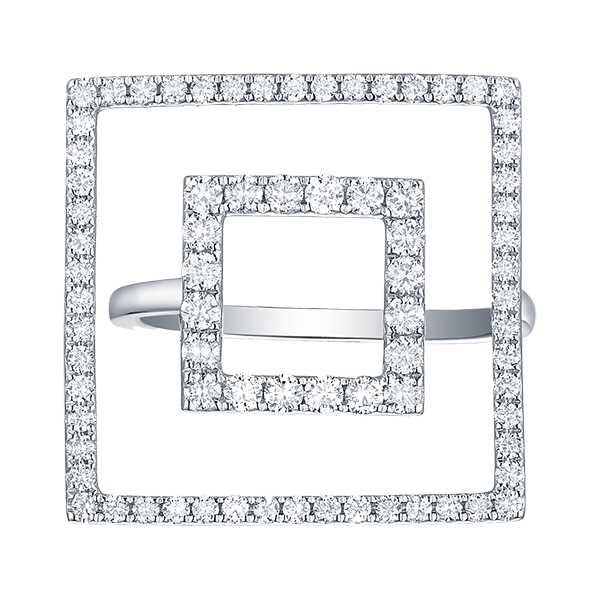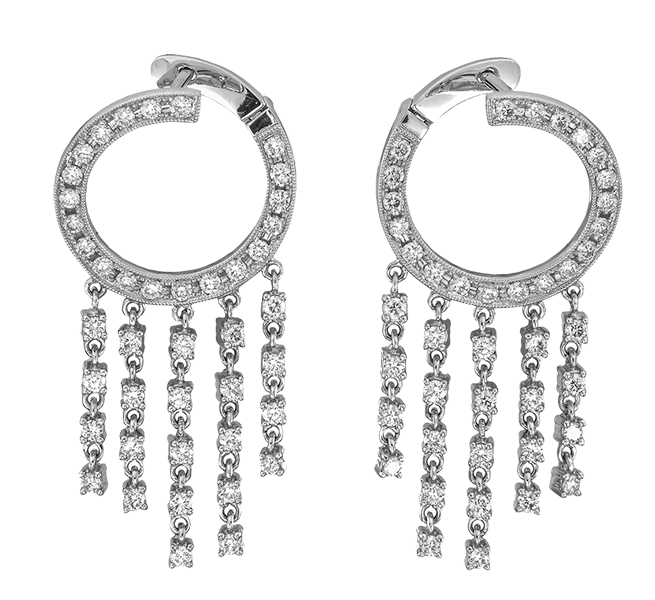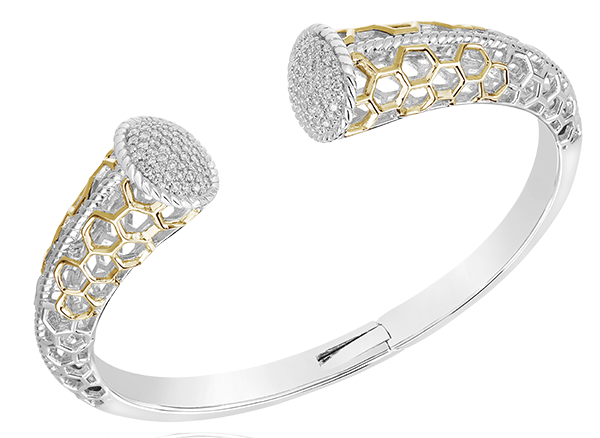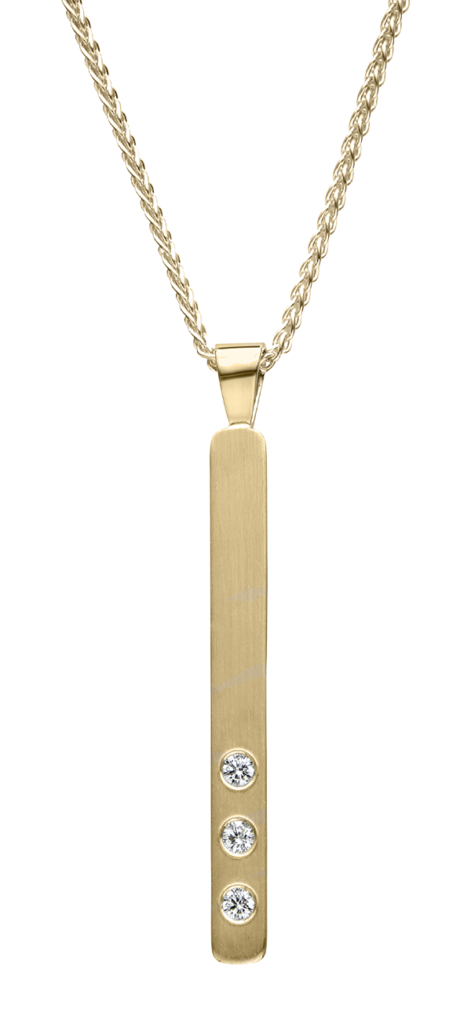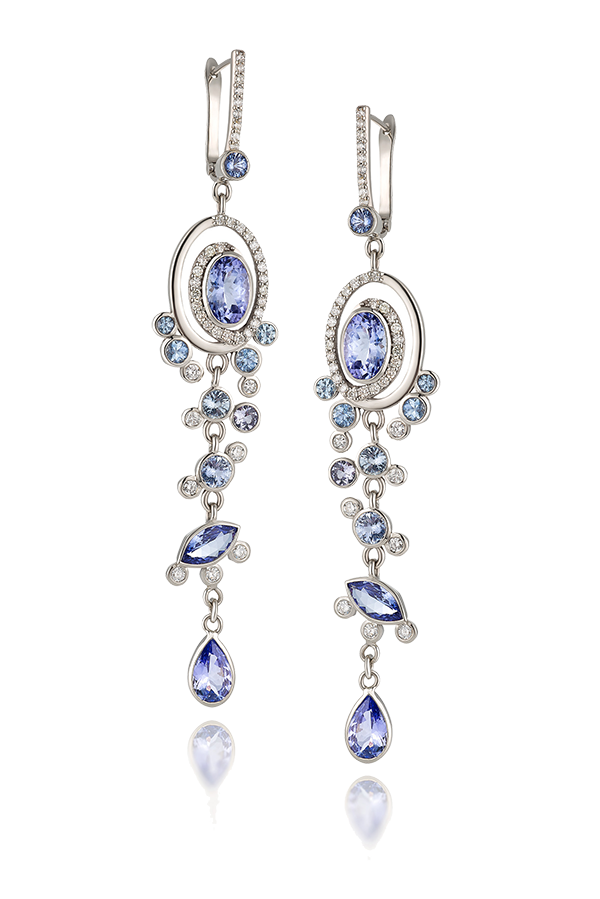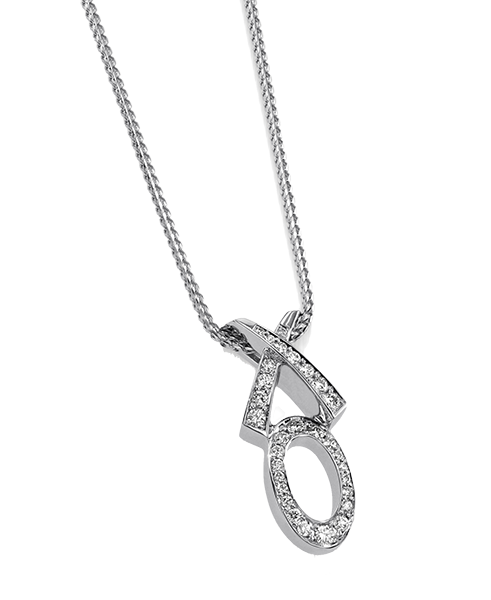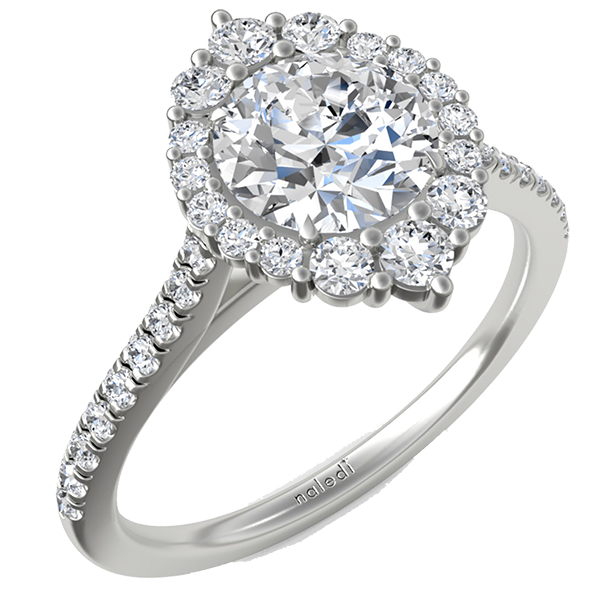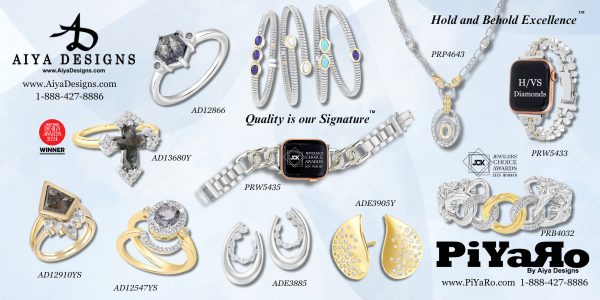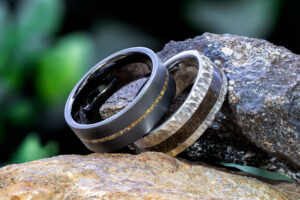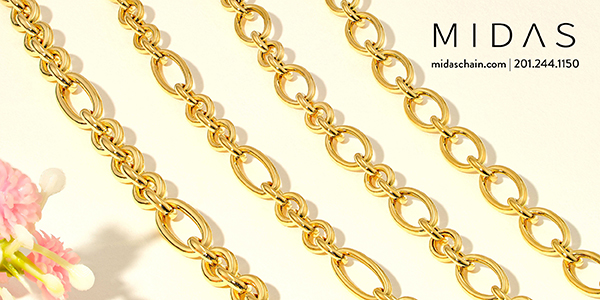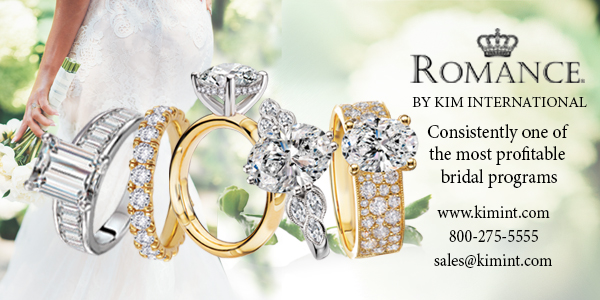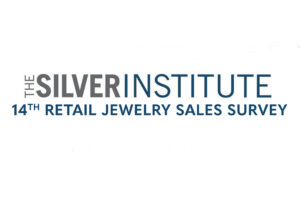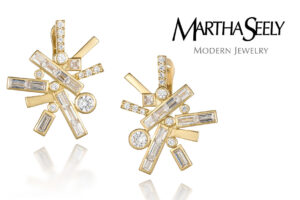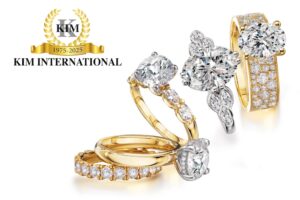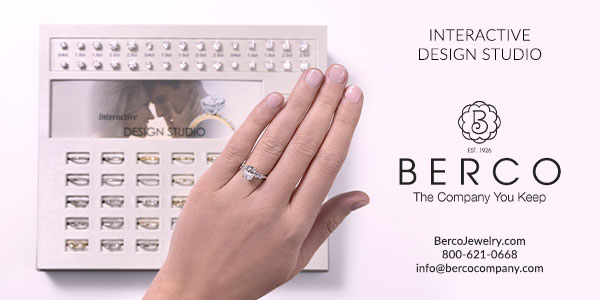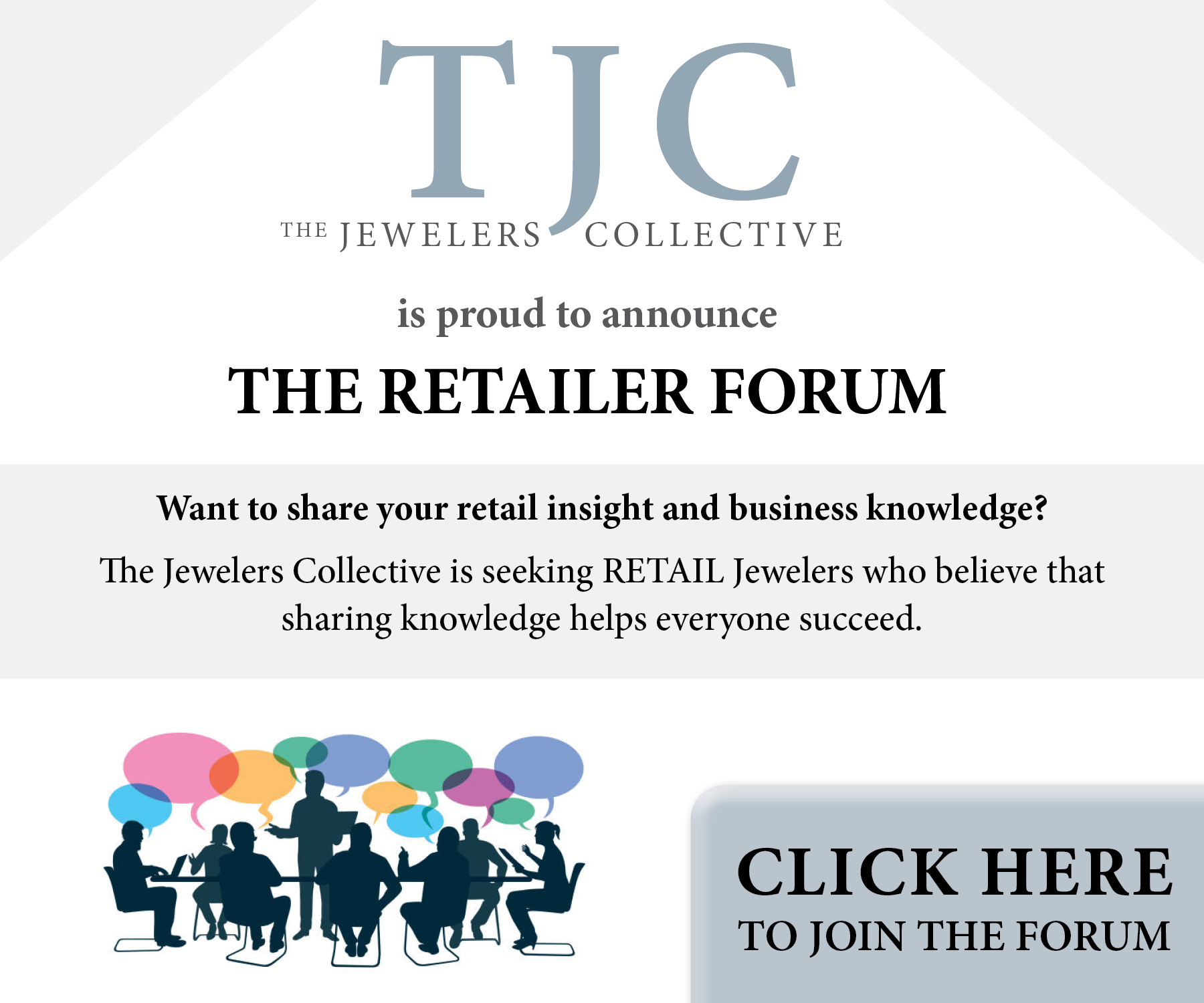MEDIA |
FEBRUARY 2023
The Great Debate To Sell Or Not To Sell Lab Grown Diamonds
Megan Crabtree
Last year saw such a surge in the lab-grown vs. natural diamond debate it has some industry professionals wondering…can’t we all just get along? While I’m not against retailers selling lab-grown diamonds, there needs to be a sales strategy and a clear understanding of the financial implications they present, otherwise, you may be leaving money on the table.
There are retailers out there selling 70 plus percent lab-grown diamonds vs natural diamonds.
In a recent interview, diamond market analyst Paul Zimnisky told National Jeweler “lab-grown jewelry sales now make up 10% of sales [globally]”. That’s a huge number that’s hard to overlook. So, let’s discuss!
Smiling Rocks Lab Grown diamonds
Oversized skyline ring
in 14K lab grown diamonds
MSRP $2199
The cut is VG-EX, SI EF
and 0.96 TCW
212.596.4163
Fana
Bold and beautiful five
stone engagement ring
MSRP $4575
.95 TCW not including
the center stone.
800.433.0012
There are retailers out there selling 70 plus percent lab-grown diamonds vs natural diamonds. The most typical reasons I hear for this is that retailers believe lab diamonds help them expand their market, they make a bigger profit, and the consumer gets the bigger look they want. It is an understandable way to accommodate customers looking for more bang for the buck, but the thought process on profit hasn’t added up. Let’s say you have the option to sell a 1-carat lab grown for $1600 or a 1-carat natural diamond for $6,000. If you’re making double on the $1,600 lab diamond, that is an $800 profit. While you typically make less of a margin on natural let’s say a 40% profit margin that would mean the profit on the $6,000 natural diamond is $2,400. That means you would need to sell 4 lab-grown diamonds to every 1 natural in order to make the same profit. If you do go the route of buying lab-grown diamonds, ensure you have an exit strategy.
Jyes International
18k white gold
diamond
fringe earrings
MSRP $7600
Round brilliant
diamonds 1.56 TCW.
F-G color and VS clarity.
415.621.8880
Berco
14K white gold Circle
of Love secure set
diamond pendant
MSRP $2060
.75 TCW, 12 round
brilliant diamonds. G-H
color, SI2 clarity. 18”
chain included.
800.621.0668
Buying on asset can be risky for businesses because we have seen that lab-grown diamonds can drop by 30% or more in value over one year.
Legend Jewelry
14K Yellow gold
baguette diamond ring
MSRP $4299
GH color, SI clarity, 19
baguette Diamond 0.88
TCW , 77 round diamond
0.78ct diamonds
866.607.3098
PiYaRo
Luxury silver
honeycomb bracelet
with 14k yellow gold
MSRP $3499
.82 TCW white VS
diamonds
888.427.8886
Lab-grown diamonds are not considered unique because they are not rare. It takes typically less than a month to grow a 1-carat lab diamond versus a natural diamond that takes 1 to 3.3 billion years to form naturally. According to The Diamond Pro, lab diamonds have little to no resale value while natural diamonds retain 50% of their value after purchase.
E.L. Designs
14K Gold pendant
w/ three diamonds
and 1.3mm wheat chain
MSRP $1610
MSRP $1610 1.75mm flush-mount
diamonds ..06 TCW
800.828.1122
Martha Seely
14k white gold with
Tanzanites, sapphires &
diamonds
MSRP $8015
5.8ct Tanzanites; 3.2
ct sapphires; 1.25 TCW
diamonds – VS HI.
617-899-2162
For retailers offering 100% tradeins, this can be problematic. Retailers need to ensure their tradein policies are well defined and salespeople must be able to clearly explain upfront to customers intent on opting for lab-grown that their purchase will not have an equal trade-in value. Otherwise, you risk losing your client’s trust in the future when they attempt to trade a lab diamond in only to realize, after the fact, it is worth 50% less than what they originally paid.
VLORA
Miravel 14Kt yellow
gold diamond baguette
double trinity huggie
earrings
MSRP $4300
diamonds ..06 TCW
800.807.2481
John Atencio
Paris X/O Pave Diamond
Pendant Necklace
MSRP $2575
30 diamonds 0.34 TCW.
Diamond quality: G-H SI1
720.445.5292
I suggest always offering a natural diamond within the customer’s price range and educating them on the benefits of being able to trade it up in the future. If the client still wants to see or purchase the created option, don’t leave money on the table. Choose one that is the same price and show it next to the natural diamond. Be sure to give them the opportunity to make an informed decision and avoid seeming deceptive by being aware of the FTC rules around selling lab-grown. You must be clear they are not mined, and they are not diamonds and you cannot say they are sustainable since there is no current proof.
According to The Diamond Pro, lab diamonds have little to no resale value while natural diamonds retain 50% of their value after purchase.
Regardless of whether you deliver a lab-grown diamond or a natural diamond to your consumer at the counter, it always leaves in your store box with your name on that box. Transparency always creates trust and transacting in a lab-grown marketplace that has tremendous volatility should force you to air on the side of caution if you are not 100% sure about the product itself.
Naledi
14K white gold graduated round
diamond halo engagement ring
MSRP $2150
We typically utilize
diamonds graded G-I
color and VS2-SI2 clarity
312.372.0506
The question still remains, to sell or not to sell lab-grown diamonds? Where do you stand?
Megan Crabtree is the Founder & CEO of Crabtree Consulting, a consulting firm with a proven track record of successfully growing jewelry retailers and manufacturers to unprecedented numbers for over two decades. We provide a unique perspective that leads companies on the fast track to growth. crabtreeadvisory.com
More From The Jewelers Collective
Press Releases
Regardless of whether you deliver a lab-grown diamond or a natural diamond to your consumer at the counter, it always leaves in your store box with your name on that box. Transparency always creates trust and transacting in a lab-grown marketplace that has tremendous volatility should force you to air on the side of caution if you are not 100% sure about the product itself.

